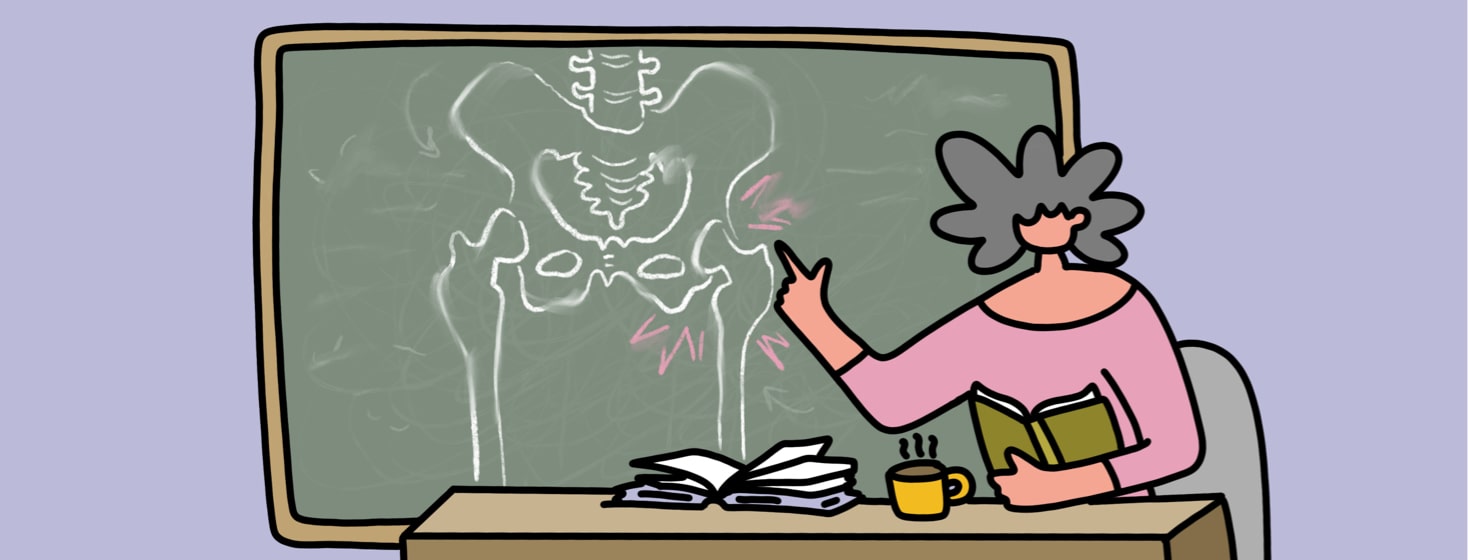Avascular Necrosis (AVN) and Sickle Cell
Like other parts of your body, your bones are composed of living cells that require a steady supply of blood to survive. When something interrupts this blood flow, bone tissue can die. This can cause further problems within your bones and joints.1
Avascular necrosis (AVN) means “death of bone tissue.” It is a condition that can form in people living with sickle cell disease (SCD) and other medical conditions that involve restricted blood flow. AVN may also happen after an injury to a bone or joint, or if you take certain medicines like steroids.1,2
What causes AVN in people with sickle cell disease?
SCD is characterized by “sickle,” or crescent, shaped red blood cells. Sickle cells are stiffer and more sticky than normal cells. These cells can cut off the flow of blood in your body’s small blood vessels.3,4
When this happens in vessels that provide blood to your bones, it can cause AVN. The result is less oxygen to the bone and a narrowing of the joints, which can lead to collapsed bones.3,4
If AVN affects a small bone that does not carry much weight, your body may be able to repair the damaged area. You may not have any health problems. Unfortunately, this rarely happens. The bone is likely to wear away and form fractures. In time, the damage will likely cause the bone to collapse.1
What are the symptoms of AVN?
AVN mainly affects the hip joint. But it also can develop elsewhere in the body, like the shoulders, knees, or ankles. When the condition first strikes, you may not have any symptoms. As AVN worsens, it is likely to cause joint pain ranging from mild to severe.2,3,5
In the early stages of AVN, you may feel pain only when you put weight on the affected joint. As the condition progresses, though, the pain can become more constant. You may feel it even when you are not active. If AVN affects your hip joint, the pain may shoot down to your groin or buttocks.1,3
There is no set time frame for AVN symptom progression. Some people begin to have symptoms and lose joint function all in a matter of weeks. For others, this process may take years.1,3
How do doctors diagnose AVN?
Doctors use imaging technology to help diagnose AVN. They can usually detect advanced AVN with a standard X-ray. But in its early stages, AVN can be harder to spot. Doctors may need more advanced technology to see it, such as:3
- Magnetic resonance imaging (MRI)
- Bone scan
- Computerized tomography (CT) scan
How is AVN treated?
The first line of defense against AVN is treating the root cause of it: SCD. Having fewer, less severe sickle cell crises lowers your chances of having other health problems like AVN.5
There are a number of treatments for SCD, including:5
A bone marrow transplant is another promising therapy. It involves replacing unhealthy bone marrow with healthy bone marrow from a donor. Children are the main group who can benefit from this type of therapy.5
Even when you manage your SCD, you could still develop AVN. Your doctor may suggest a few ways to manage the condition, including pain medicines, physical therapy, and surgery.3,6,7
Non-steroidal anti-inflammatory drugs and analgesics
NSAIDs and analgesics may be useful in easing pain and reducing swelling. These medicines are available over the counter or by prescription. But while they may provide relief to younger children with a less progressive form of AVN, they may not work as well for older children and adults.6
Physical therapy
Your doctor also may recommend physical therapy and exercise to manage symptoms of AVN. Regular activity and movement can help with pain management, mobility, and overall function.3,7
Surgery
If your case is severe, your doctor may recommend surgery for AVN. There are three types of surgery for AVN:3
- Core decompression takes out the bone’s inner layer to relieve pressure and make space for newly formed blood vessels.
- Osteotomy removes a section of bone in order to shift the remaining bone. The goal is to put less weight on the area with blocked blood vessels.
- Arthroplasty is also called joint replacement. This is when a surgeon replaces unhealthy bone with artificial parts.

Join the conversation